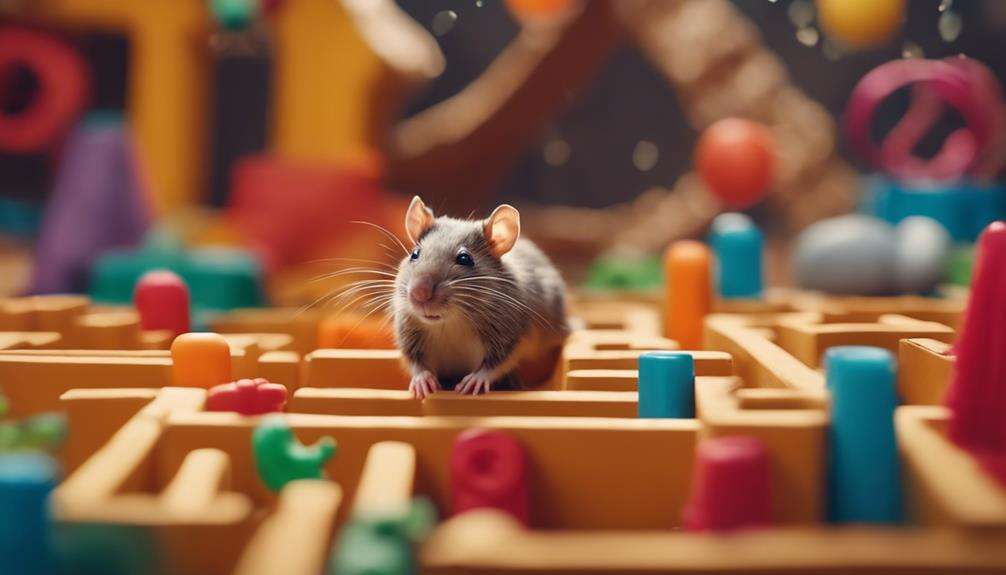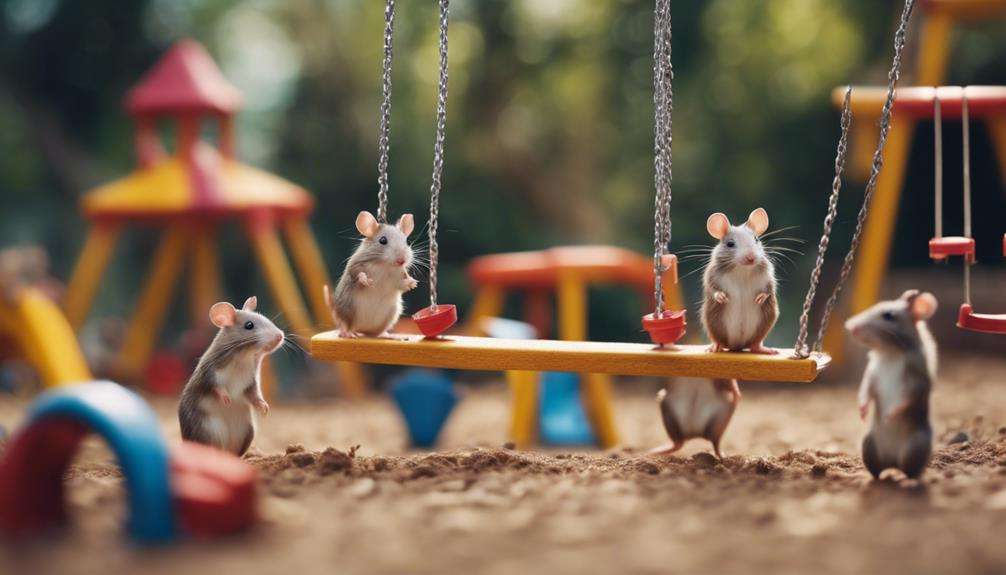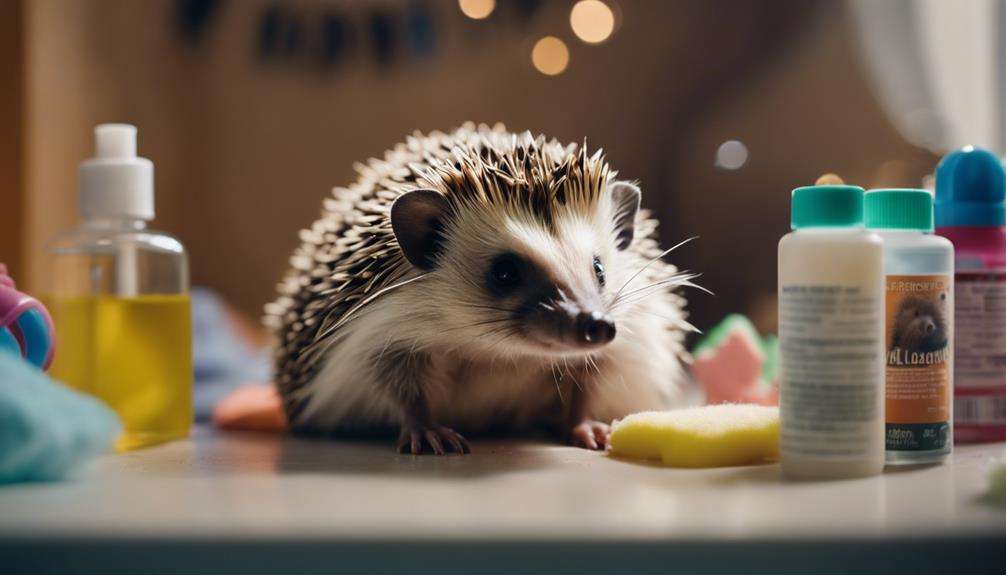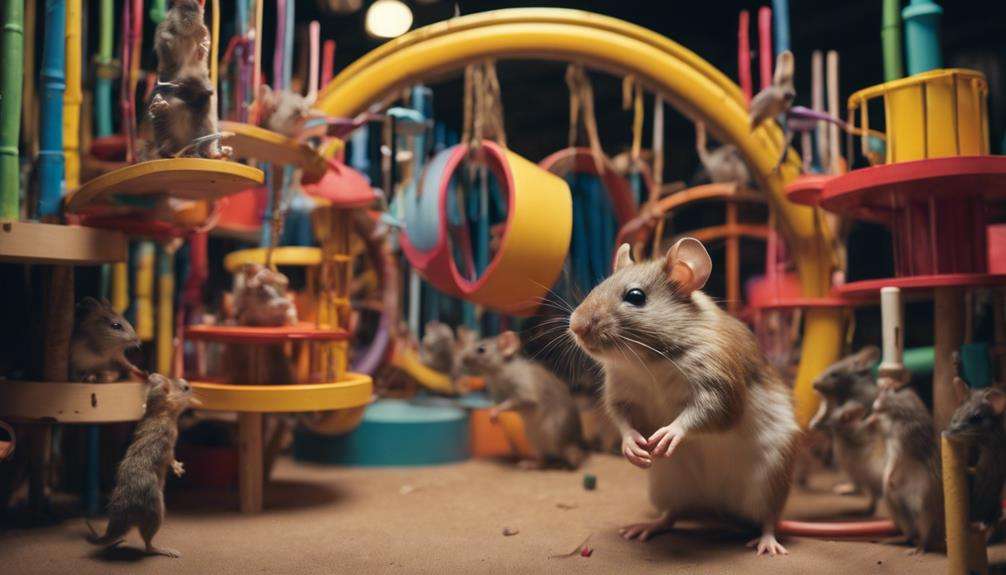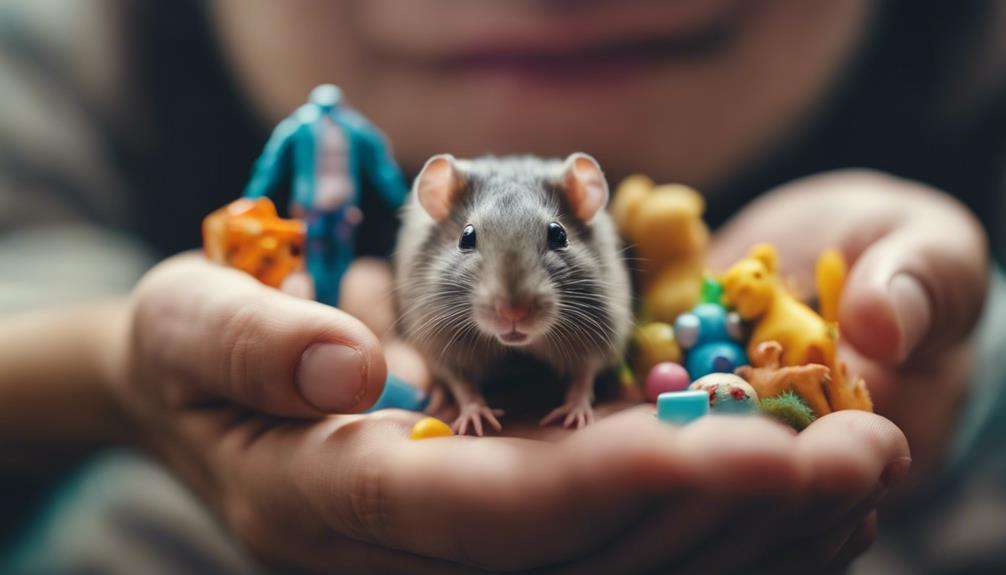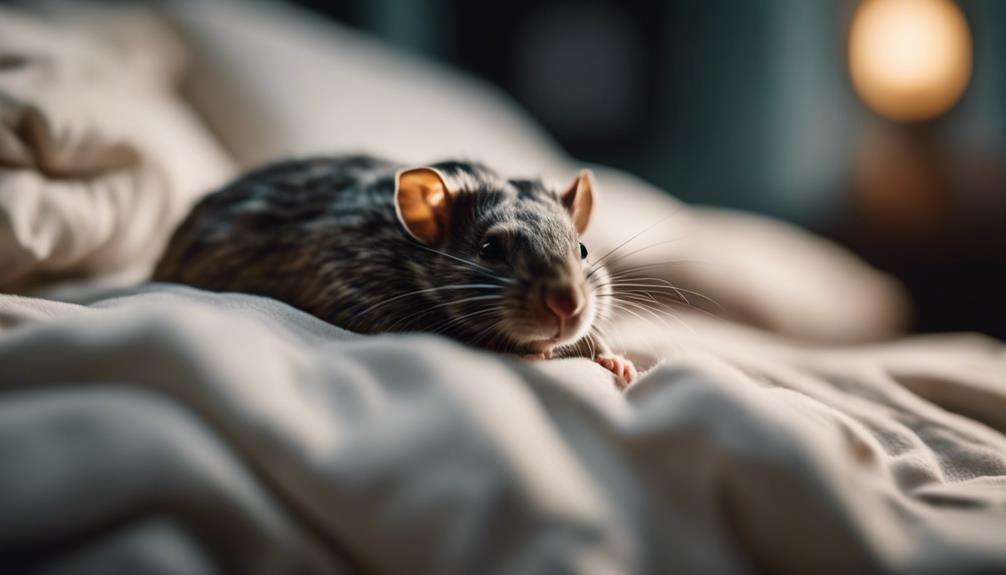Imagine a world where tiny creatures with big personalities roam, sparking curiosity and wonder in your child's eyes. These quirky rodents hold secrets waiting to be uncovered, offering delightful surprises and valuable lessons along the way.
From their playful antics to their clever problem-solving skills, these pint-sized companions have a way of capturing hearts and minds effortlessly. But what makes them truly special?
Stay tuned to discover the captivating world of quirky rodents and the fun interactions they bring into your child's life.
Key Takeaways
- Rodents offer unique interactions through vocalizations and body language cues.
- Encourage empathy, responsibility, and respect through gentle handling and positive reinforcement.
- Promote mental stimulation and physical exercise with DIY activities and toys.
- Foster bonds by understanding rodent behavior, needs, and communication methods.
Unique Rodent Species for Kids
When exploring unique rodent species suitable for kids, you'll encounter fascinating creatures like naked mole rats, capybaras, African crested rats, Patagonian maras, and Dassie rats.
Let's delve into some intriguing facts about these rodents. Naked mole rats are extraordinary creatures as they're cold-blooded, live in underground colonies reminiscent of bees, and have a queen that leads the group.
Capybaras, the largest rodents globally, are known for their social behavior and semi-aquatic lifestyle, often found near water bodies.
African crested rats display a unique defense mechanism by chewing the bark of a poisonous tree and coating their fur with toxins.
Patagonian maras, also called the 'cavy of Patagonia,' form monogamous pairs, showcasing strong familial bonds.
Dassie rats, although not true rodents, share similarities and are recognized for their rock-dwelling habits.
Each of these rodent species has distinctive features that make them intriguing for kids to observe and learn about.
Did you know that mice eat a variety of foods, including seeds, fruits, and insects?
Safe Handling Tips for Children
To ensure safe and respectful interactions with rodents, children should be taught proper handling techniques and hygiene practices. When handling mice, it's essential to approach them gently and avoid sudden movements to prevent stress. Show kids the correct way to support a mouse's body, ensuring they don't accidentally drop the tiny creature. Educate children on the importance of handwashing before and after interacting with mice to maintain hygiene and prevent the spread of germs.
Demonstrating to kids how to engage with mice calmly and quietly can help build trust and rapport with the animals. Supervision is key during these interactions to ensure the safety of both the children and the mice. By teaching children these safe handling tips, they can enjoy meaningful interactions with mice while also learning the importance of respecting and caring for these small creatures. Remember, gentle handling and proper hygiene practices are crucial for fostering a positive relationship between children and their pet rodents.
Fun Activities With Pet Rodents
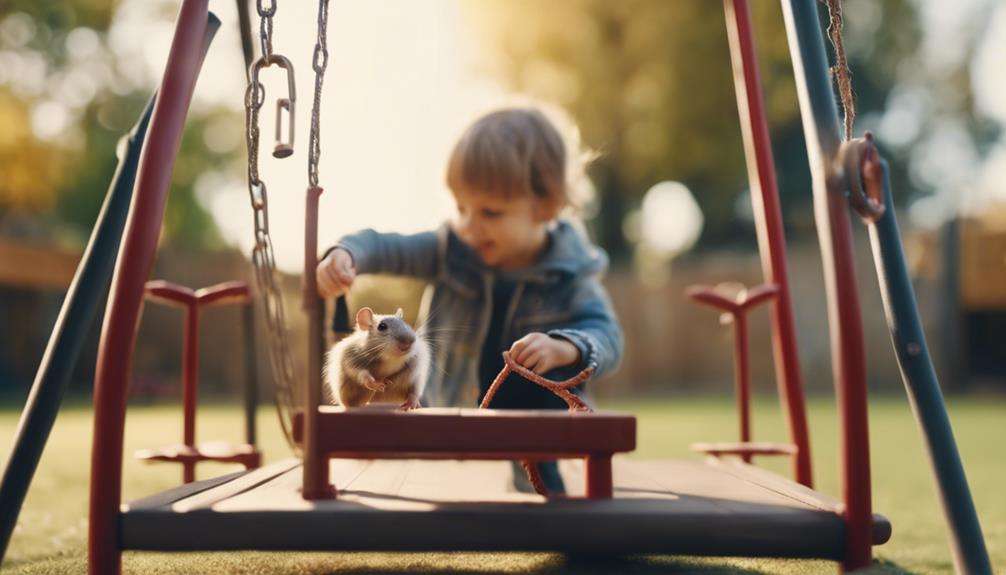
Engage kids in a variety of interactive activities with their pet rodents, such as rats and hamsters, to promote companionship and stimulate their natural behaviors. These activities can be both enjoyable and educational for children and beneficial for the rodents' well-being.
Here are some fun activities you can do with your pet rodents:
- DIY Obstacle Courses and Mazes: Set up creative obstacle courses and mazes using cardboard tubes, tunnels, and small hurdles to challenge your pet rodents' problem-solving skills and agility.
- Hand-Feeding and Training: Teach children to hand-feed their pet rodents treats and use positive reinforcement techniques to train them to perform tricks like running through tunnels or spinning in circles.
- Hide and Seek Games: Plan games of hide and seek with your pet rodents by hiding treats or toys around their play area. This activity not only entertains the rodents but also taps into their natural instincts to forage and explore.
Educational Value of Rodent Interactions
Exploring the educational value of rodent interactions can provide children with valuable insights into responsibility, empathy, and the natural behaviors of these small animals. Engaging in rodent enrichment activities, such as setting up obstacle courses or providing toys for them to interact with, not only entertains kids but also teaches them about the importance of mental stimulation for animals in captivity.
Observing rodent socialization benefits can help children understand the significance of companionship and communication in these creatures' lives. Witnessing how rodents interact with each other can offer a glimpse into their social structures and hierarchy.
Moreover, facing rodent care challenges, like ensuring they have a clean environment, a balanced diet, and regular veterinary check-ups, can teach kids about the dedication and effort required to look after a pet responsibly. By learning about rodent habits and needs, children can develop a sense of respect for all living creatures and gain valuable skills that promote empathy, patience, and nurturing qualities.
Rodent Care Responsibilities for Kids
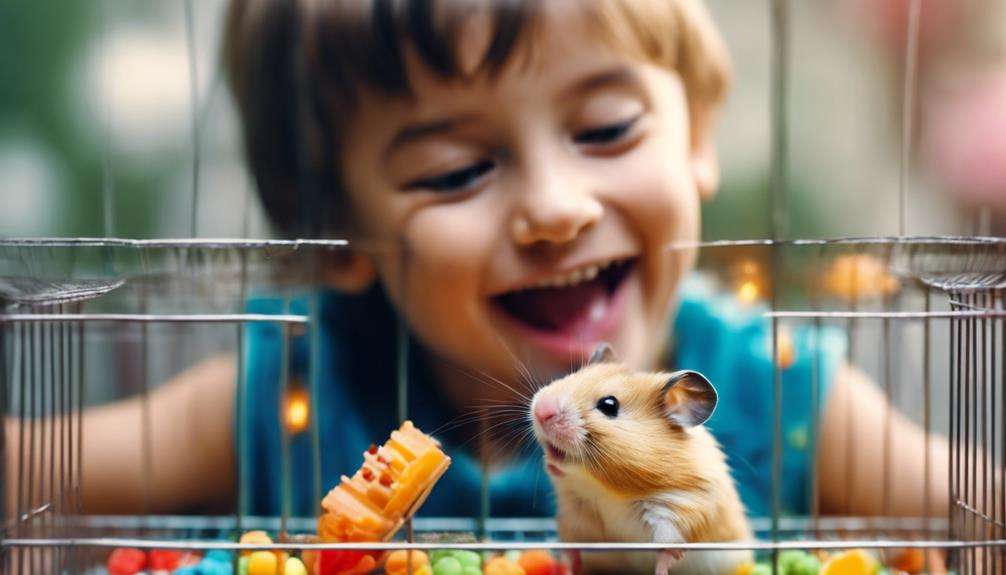
Providing fresh food and water daily is a crucial aspect of rodent care responsibilities for kids. It's essential to maintain a clean and healthy environment for your rodent friend. Remember these key points:
- Daily care: Ensure your rodent has access to fresh food and water every day. Cleaning its cage regularly will help prevent the buildup of bacteria and maintain a hygienic living space.
- Rodent enrichment: To keep your rodent happy and healthy, provide toys and activities that encourage mental stimulation. Rodents enjoy running wheels, tunnels, and chew toys.
- Handling tips: Teach children to handle rodents gently and supervise interactions to prevent injuries. It's important to educate kids about the specific dietary needs and habits of the rodent they're caring for to ensure its well-being.
Rodent Behavior Explained for Children
Rodents have fascinating habits that are essential to their survival. Understanding these behaviors can help you appreciate their playful antics and communication methods.
Rodent behavior holds many secrets waiting to be uncovered by curious young minds.
Rodent Habits Decoded
Observing the behaviors of small rodents like mice and rats offers a fascinating glimpse into their social structures and individual well-being. When it comes to rodent habits, there are several key aspects to consider:
- Rodent socialization techniques: Rodents engage in various social behaviors to communicate and bond with one another within their groups.
- Nesting habits: These animals meticulously build nests using materials like twigs, leaves, and paper to create safe and cozy spaces for resting and raising their young.
- Grooming rituals: Rodents spend a significant amount of time grooming themselves and others, not only to keep clean but also to strengthen social bonds through mutual grooming sessions.
Understanding these habits can provide insight into the intricate lives of these intelligent creatures.
Playful Rodent Antics
Exploring the world of playful rodent antics can be an exciting journey for children interested in understanding the behavior of these small and intriguing creatures.
Rodents engage in various interactive behaviors during playtime, such as grooming each other and playing with toys. Some rodents enjoy interactive sessions with their human caretakers, showing affection and seeking attention.
Their engaging interactions include exploring the environment, investigating new objects, and displaying curiosity through playful antics. By observing these behaviors, children can gain insight into the social and curious nature of rodents.
Understanding these playful antics not only fosters a deeper appreciation for these unique animals but also helps children develop empathy and a sense of responsibility towards their furry friends.
Rodent Communication Secrets
Delving into the intricate world of rodent communication unveils a fascinating realm where squeaks, chirps, and subtle body cues play crucial roles in conveying messages among these small creatures.
- Rodent vocalizations, body language:
Rodents communicate through various sounds, such as squeaks, chirps, and chattering, while also using body language like tail movements and ear positions to convey messages.
- Scent marking communication:
Rodents also communicate through scent marking using glands on their bodies, leaving chemical signals for other rodents to interpret.
- Social grooming benefits:
Social grooming among rodents isn't just about cleanliness; it helps maintain group cohesion and communication, fostering bonds and ensuring a harmonious social dynamic within the group.
Creating a Bond With Your Rodent
To create a strong bond with your rodent, spend quality time handling them gently and offer tasty treats like fruits and nuts.
Engage in interactive play sessions using safe toys and speak to your rodent in a soothing voice for comfort.
Provide a comfortable environment with cozy bedding and hiding spots to ensure your rodent feels safe and relaxed.
Bonding Activities for Rodents
To establish a strong bond with your rodent, engage in interactive play sessions and offer treats to create a positive and enriching experience for both you and your furry companion.
Here are some activities to help strengthen your bond:
- Interactive games & Treat training: Play games like hide-and-seek or teach your rodent tricks using treats as rewards.
- Bonding exercises & Enrichment toys: Spend time bonding through activities like gentle petting or providing toys that encourage exploration.
- Trust building activities & Communication techniques: Build trust by respecting your rodent's boundaries and communicating with soothing tones and positive reinforcement.
Understanding Rodent Behavior
Understanding rodent behavior is essential for creating a strong bond with your furry companion. Rodents communicate through body language, such as grooming, tail wagging, and vocalizations, indicating their emotions and needs.
Social interactions play a vital role in their well-being, as they thrive on companionship and positive human contact. By observing their responses to stimuli, you can tailor interactions to suit their individual preferences, strengthening your bond.
Providing enriching environments with toys, hiding spots, and opportunities for exploration enhances their mental and physical health. Remember, patience, consistency, and positive reinforcement during training sessions are key to building a trusting relationship with your rodent.
Frequently Asked Questions
What Are Fun Activities to Do With Rats?
Engage in fun activities with rats such as rat agility courses, rat hide and seek, and rat treat puzzles. These interactions stimulate their minds, provide physical exercise, and strengthen the human-rat bond for an enriching experience.
What Are Some Fun Facts About Mice for Kids?
Mice exhibit fascinating behaviors like whisker sensing and grooming habits. They thrive in various habitats due to their adaptability. Their diet preferences lean towards seeds and grains, making them resourceful foragers.
What Are Fun Activities for Mice?
Set up maze challenges to test their agility, engage in wheel races for exercise, and play hide and seek with treats to stimulate their natural instincts. These activities provide enrichment and mental stimulation for your mice.
What Can I Give My Pet Rat to Play With?
You can give your pet rat DIY toys, like puzzle feeders or maze-like structures, for enrichment and mental stimulation. Interactive games, such as hiding treats in their play area, will encourage foraging behavior and keep them engaged.
Conclusion
In conclusion, interacting with rodents can be a rewarding and educational experience for kids. Remember, 'the early bird catches the worm,' so start teaching children about responsible rodent care and behavior early on.
By engaging in fun activities and building a bond with these quirky creatures, children can develop empathy, responsibility, and a deeper understanding of the natural world around them.
Encourage curiosity and exploration to foster a love for learning about these fascinating rodents.

